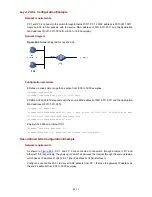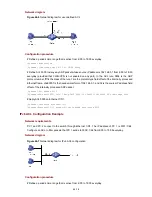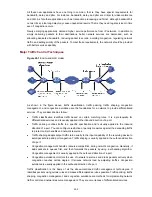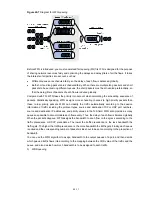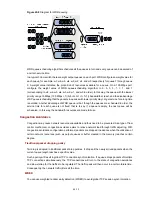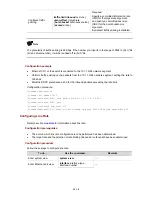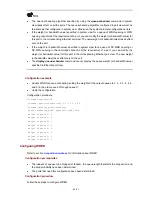
enough to forward the packets, the traffic is conforming to the specification; otherwise, the traffic is
nonconforming or excess.
Parameters concerning token bucket include:
een used and the traffic is excess.
T
i
The
affic into the network and limit it to a
e range, or to "discipline" the extra traffic. In this way, the network resources and the interests
operators are protected. For example, you can limit HTTP packets to be within 50% of the
choose to drop the
actions include:
DSCP precedence of the packets whose
evaluation result is “nonconforming” and then forward them.
Line Rate
be sent by this port or packets
reaching the port. Packets can be sent or received if there are enough tokens in the token bucket;
ll be dropped.
ackets passing a port.
VLAN
ntifies traffics using ACLs and maps the VLAN tags carrier in matched packets to
specific VLAN tags. By employing VLAN mapping on a switch connecting user networks to the carrier
network, you can map the VLAN tags of specific user network packets to those of specific VLANs in the
carrier network, thus meeting the requirements of the carrier network.
Queue Scheduling
When the network is congested, the problem that many packets compete for resources must be solved,
usually through queue scheduling.
z
Average rate: The rate at which tokens are put into the bucket, namely, the permitted average rate
of the traffic. It is generally set to committed information rate (CIR).
z
Burst size: The capacity of the token bucket, namely, the maximum traffic size that is permitted in
each burst. It is generally set to committed burst size (CBS). The set burst size must be greater
than the maximum packet length.
One evaluation is performed on each arriving packet. In each evaluation, if the number of tokens in the
bucket is enough, the traffic is conforming to the specification and you must take away some tokens
whose number is corresponding to the packet forwarding authority; if the number of tokens in the bucket
is not enough, it means that too many tokens have b
raff c policing
typical application of traffic policing is to supervise specific tr
reasonabl
of the
network bandwidth. If the traffic of a certain connection is excess, traffic policing can
packets or to reset the priority of the packets.
Traffic policing is widely used in policing the traffic into the network of internet service providers (ISPs).
Traffic policing can identify the policed traffic and perform pre-defined policing actions based on
different evaluation results. These
z
Drop. Drop the packet whose evaluation result is “nonconforming”.
z
Modify the DSCP precedence and forward. Modify the
Line rate refers to limiting the total rate of inbound or outbound packets on a port.
Line rate can be implemented through token buckets. That is, if you perform line rate configuration for a
port, the token bucket determines the way to process the packets to
otherwise, they wi
Compared to traffic policing, line rate applies to all the packets passing a port. It is a simpler solution if
you want to limit the rate of all the p
Mapping
VLAN mapping ide
45-9




